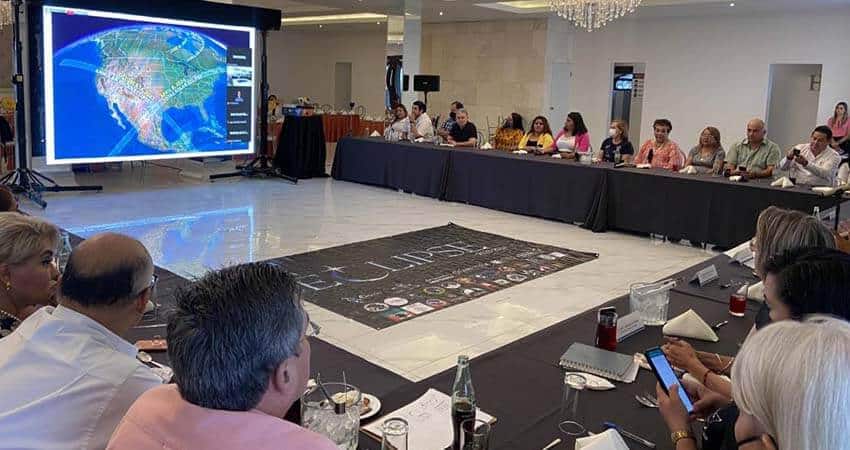The northern state of Coahuila is preparing to host hundreds of thousands of people from around the world when it becomes an outstanding viewing point for two solar eclipses within six months.
One will plunge the area into total darkness for a whopping four minutes.
“It’s so long that they’re calling it the Great Eclipse,” said Tanya Victoria Arguijo Herrera of Grupo Eclipse, a former federal deputy and astrophysicist who, during her term, was the lower house’s head of the Commission on Science and Technology.
Eclipses on average, she noted, last about two minutes.

The celestial phenomena won’t occur until fall 2023 and spring 2024, but with thousands of eclipse-chasers and amateur astronomers already making plans — and with hordes of personnel from NASA, National Geographic, Discovery and other scientific agencies expected — officials are not waiting around.
The organizing committee of Grupo Eclipse held a conference last week to get mayors, business leaders, hoteliers, restaurateurs, educational directors and the media up to speed on preparations.
On October 14, 2023, an annular solar eclipse will pass through Monclova, a municipality of about 370,000 people located 180 kilometers from the border with Texas. An annular eclipse occurs when the moon is far away from the Earth when it centers in front of the sun, thus leaving a halo of light all around.
That won’t be the case on April 8, 2024, when a total eclipse at 1:15 p.m. will turn day into night for several minutes in the central and northern areas of Coahuila, including Monclova.
NASA plans to be in Torreón for the 2024 eclipse and will live stream the event.TORREÒN, el mejor lugar para ver el ECLIPSE SOLAR TOTAL el 8 de abril del 2024, asegura la NASA.#Torreon #Coahuila #eclipsesolar2024 #Gomezpalacio #Sanpedro #Lerdo #Franciscoimadero #Matamoros #Saltillom #Monclova #Sabinas #Muzquiz #Allende #Piedrasnegras #Acuña #Mexico #CDMX pic.twitter.com/e5aRcNXkuE
— El Observador Coahuila (@elobservadorcoa) April 9, 2022
The city has been nicknamed “Eclipse Route Headquarters 2023–2024” by the National Polytechnic Institute.
Arguijo Herrera talked last week about the positive economic impact on the region and presented strategies on how to best welcome visitors. There will be several stages of training, she noted, so that all workers in the tourism sector will be prepared. Initially, she asked them to start organizing tour packages and safe transportation options.
“Coahuila is privileged,” she said. “This eclipse will pass through Sinaloa, Durango, Coahuila, the United States and a bit of Canada, but NASA does the calculations, and Mexico is the most favored area because it will last longer.”
She said that NASA personnel are going to make the Coahuila municipality of Torreón their home base. The ninth-largest metropolitan area in Mexico with 1.5 million people, Torreón is a 360-kilometer drive from Monclova. Other visitors are expected throughout central and northern Coahuila, including the capital of Saltillo.

Monclova Mayor Mario Dávila Delgado said he expects tens of thousands of foreign visitors to his city and municipality, and that the economic impact will be upwards of US $1 million. Organizers of the “Eclipse Route” project, which includes members of Mexico’s national space agency, said Coahuila overall should prepare to receive as many as 1 million people from around the world.
With reports from El Siglo de Torreon and Vanguardia
